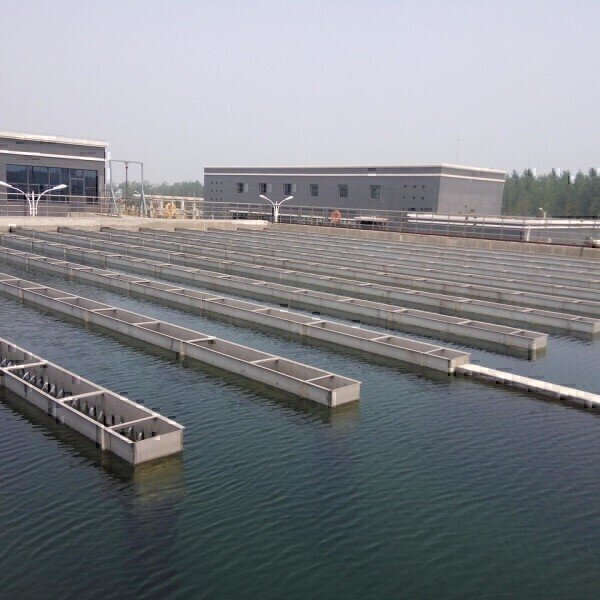A Biased View of Water Treatment For Well Water
Table of ContentsIndicators on Water Treatment For Well Water You Need To Know6 Simple Techniques For Water Treatment For Well WaterUnknown Facts About Water Treatment For Well WaterThe Ultimate Guide To Water Treatment For Well Water
In this blog site, we will certainly cover the four kinds of water therapy plants, how they work and also the numerous industrial applications of each type. Wastewater Therapy Plant (WWTP) Wastewater is the water that stems from water utilized in residential, agricultural, commercial as well as clinical or transportation activities.on the various other hand, comes from manufacturing, industrial as well as commercial activities lugged and has an entirely various composition than sewage water. How does it function? The very first action in this water treatment plant is that the wastewater drains to the plant with the help of gravity with the main sewer system.
In this stage, the water moves via the gravel chamber to get rid of any grit. The water after that moves to the bar displays which eliminate big objects.
This is after that eliminated from the container and disposed of at the dump. Following comes the sedimentation phase, additionally known as the main treatment. In this phase, the water streams to the main settling storage tanks, additionally referred to as pre-settling containers. These tanks have hoppers which are located in the base of the storage tank where water flows through.
Rumored Buzz on Water Treatment For Well Water
These settling containers make it possible for the sludge to clear up and also then relocates to digestion storage tanks. In the digestion tanks, the sludge is warmed and combined. An additional vital thing that occurs right here is the manufacturing of biogas, which the wastewater therapy plants can recycle, in the production of electric or thermal power which is another substantial advantage to the setting.
This enables the separation of water from the semi-solid sludge, whereas the continuing to be sludge undertakes the mechanical process once more for dewatering, that is securing as much water from the sludge as possible. The sludge then left behind after the food digestion as well as dewatering process is complete, is lastly thrown away in the dump.

The last action in wastewater therapy is examination. This evaluation entails examining the contamination level of the water dealt with and ensuring it follows the highest possible requirements in order to be launched or recycled for residential or industrial objectives. Applications: The majority of petroleum refineries or petrochemical in addition to chemical markets produce a large amount of wastewater and also call for on-site wastewater therapy plants.
The wastewater below streams through displays and into settlement basins that can obtain debris in large amounts. It functions as a pre-treatment as mentioned over as it takes place before 3 even more aggressive phases- main, second and tertiary treatment. Main Therapy Throughout this phase, the wastewater relocates into the clarifiers.
The 10-Minute Rule for Water Treatment For Well Water
It is the style of these tanks that lead to settling, that is, the natural solid matter accumulates at the bottom of the container while the lighter issue floats to the top ending up being less complicated for removal. The natural matter that resolves at the bottom is known as a key sludge blanket.

This RAS goes back into the primary information container as well as the bacteria in it assists in damaging down any raw material in the sewer. When RAS has actually completely experienced both the primary and also secondary information basins continuously, i. e several times, it is developed into waste-activated sludge (WAS) (water treatment for well water). The WAS great post to read then does not go back to the key explanation container but instead relocates to the covered tanks, additionally known as cardio sludge digesters.
The continuing to be sludge actions to the dewatering center that contains dewatering containers where the plant utilizes belt presses to press any kind of continuing to be water out of the sludge. Tertiary Treatment Tertiary therapy complies with the procedure of both main and second processes yet likewise furthermore entails mechanical and photochemical procedures.
The smart Trick of Water Treatment For Well Water That Nobody is Talking About
Below the emphasis is offered to physical methods such as testing, sedimentation, filtration, explanation etc. water treatment for well water. The goal of this is to remove as much solid physical matters as possible before sending the effluent for further treatment. This stage involves the elimination of solid waste and also why not try here natural issue. Here chemicals are included in damage down any type of solid as well as chemical waste.
There are two types of resins- one is an anion one while the various other is a cation one. These previous materials launch hydroxyl ions which are adversely billed while the cation resins release hydrogen ions that are positively charged. The cation-exchange resins lead to softening of water, the anion-exchange cause the elimination of nitrate from wastewater as well as the combination of both the anion and cation exchange removes basically every ionic impurity present in the feed water with a procedure called deionization.
Applications: Demineralization brings about the total removal of minerals from the water as well as is typically used in industries that need water with high degrees of purity, as an example- make-up or feed water in high-pressure central heating boilers, the food and drink market, and also process streams made use of in the production of electronic devices. They are also utilized in sectors for the generation of vapor, power as well as cooling (water treatment for well water).
